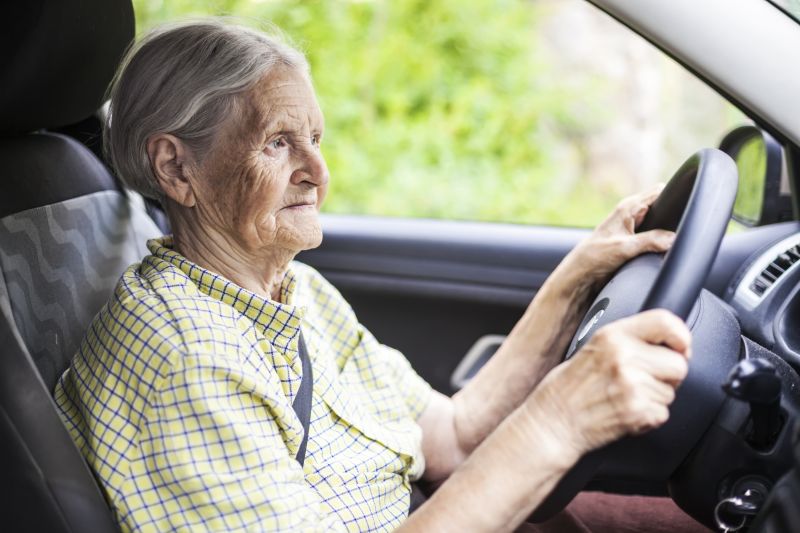When to Hang Up the Keys

Navigating the Potholes of Giving up Your Wheels
Nothing is more indicative of personal freedom than having your own transportation sitting there in your garage—ready to take you anywhere your heart desires at a moment’s notice. Americans have had a very long love affair with their vehicles. And the wide variety that is available (something to match every personality, extravagance or utility needed), exhibits just how attached we all can be to them. They are a rather large investment, something we rely on, not only out of necessity, but as part of our culture. In short, for most people, one way or another, independent transportation is a big deal.
Not only is all this true for seniors as well, but there is a particular aspect to it: Their vehicle is evidence that they are still independent and vital—living their life on their own terms. In most of our lives, there will come a time when the inevitable is unavoidable—when we will have to make the difficult adjustments to losing aspects of our independence. For many people, that first blow comes in the form of giving up their vehicle. It is understandably a hard pill to swallow. Having the ability to drive helps to keep seniors active and independent, however, the risk of being hurt or even killed in an accident increases with age. According to the National Highway Traffic Safety Administration (NHTSA), an average of 500 seniors are injured every day in crashes, with older drivers being much more likely to be involved in an accident than younger ones.
Although age is a general indicator, it is certainly not the only one. Every situation is unique to the individual. Some people remain alert and completely capable drivers well into their 80’s, yet there are also those in their 50s and 60s who should no longer be behind the wheel of a vehicle. Driving ability goes beyond the simple ability to physically operate a vehicle. Safe driving requires physical and cognitive capabilities, driving skills, concentration and good driving behavior.
Honesty is the best policy
Though self-denial may feel good in the moment, it usually leads down the road of self-destruction. Aging is not easy to face, but it is inevitable for all of us, and being able to assess our capabilities with an honest and clear head is important. Ask yourself, what could be the outcome of an accident? You could be seriously injured, and thus your ability to lead an active life limited even more than that of giving up your wheels. You could injure someone else, and that would be for more awful to face than the changes you would have to make in accommodating your transportation needs.
Hear out family and friends
If family and friends are starting to drop hints that it is time to consider letting go of your vehicle, be willing to listen. Having these discussions regarding limiting or stopping driving can be complex and emotionally difficult. Though it may be tempting to react with offense, try to understand that these are the people in your life who have your best interests at heart, and they are likely just trying to protect you and keep you safe.
Tell-tale signs
If you are experiencing any of the following it is time to consider changing your transportation situation:
- Drifting into other lanes, or straddling the lane
- Making sudden lane changes for no reason
- Becoming confused in traffic
- Braking or accelerating abruptly for no reason
- Difficulty with sight, such as not noticing pedestrians, objects or other vehicles
- Feeling nervous or troubled about driving
- Driving much slower than the posted speed
- Missing exits
- Any physical problems such as neck flexibility or joint pain while driving
- Failing to use turn signals, or having them on when not turning
- Failing to stop at stop signs or red lights
- Receiving more than two traffic tickets or warnings in the past two years
- Small fender benders such as hitting the garage door, fences, mailboxes or curbs
- Becoming easily distracted
- Having frequent close calls
- Family members or friends are voicing concerns
Pat yourself on the back
If you have come to the realization that it is time to hang up the keys, be proud of yourself, it is a sign of maturity and responsibility. Have conversations with other seniors regarding it, you can be a role model, and you never know when encouraging someone else to make a responsible decision can save someone’s health or even life.
Make a plan
Find alternatives to having your own vehicle that will allow you to continue with your active lifestyle. Even most small towns have some form of public transit, investigate all of your options. Churches and other groups may offer rides to those who need it. Enlist family, friends or neighbors in getting rides (most people are more than happy to help). Create a network of other active seniors who enjoy the same activities and share rides with those who still drive. There is not just power in numbers, there can also be a whole lot of fun to be had! Ask around to find out if there are others who no longer drive but are sitting at home alone, reach out to them, it feels great to help others as well. Just because your mobility has changed doesn’t mean it needs to end, with a little effort, you can still move forward with an active and exciting life.

